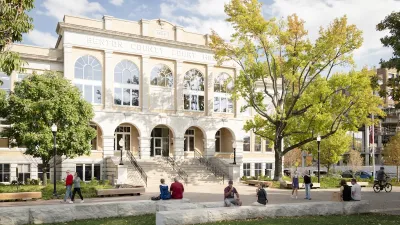Isolating poor residents from rich ones is not only bad for those being segregated, it leads to the worst outcomes for a city as a whole. Fighting displacement results in less crime and more stable and healthy communities.
Miriam Axel-Lute, Shelterforce editor, comments on a recent blog post from John Roman of the Urban Institute's Metrotrends Blog on Rooflines. Roman says that if you consider crime and violence to be contagious issues, "having prosperous, and therefore presumably less susceptable [sic] to contagion, areas abutting poorer areas will slow the spread of crime, and therefore the total amount of it in a larger area."
While Axel-Lute agrees with the general idea, she adds that this thinking inevitably leads to larger discussions regarding displacement that must be addressed. She asks "what happens if you create a tipping point by various actions to reduce crime in the 'infected' area such that some people with means move in, but take measures to ensure those who are already there and want to stay are not displaced?"
FULL STORY: Fighting Displacement Fights Crime

Study: Maui’s Plan to Convert Vacation Rentals to Long-Term Housing Could Cause Nearly $1 Billion Economic Loss
The plan would reduce visitor accommodation by 25,% resulting in 1,900 jobs lost.

Alabama: Trump Terminates Settlements for Black Communities Harmed By Raw Sewage
Trump deemed the landmark civil rights agreement “illegal DEI and environmental justice policy.”

Why Should We Subsidize Public Transportation?
Many public transit agencies face financial stress due to rising costs, declining fare revenue, and declining subsidies. Transit advocates must provide a strong business case for increasing public transit funding.

Paris Bike Boom Leads to Steep Drop in Air Pollution
The French city’s air quality has improved dramatically in the past 20 years, coinciding with a growth in cycling.

Why Housing Costs More to Build in California Than in Texas
Hard costs like labor and materials combined with ‘soft’ costs such as permitting make building in the San Francisco Bay Area almost three times as costly as in Texas cities.

San Diego County Sees a Rise in Urban Coyotes
San Diego County experiences a rise in urban coyotes, as sightings become prevalent throughout its urban neighbourhoods and surrounding areas.
Urban Design for Planners 1: Software Tools
This six-course series explores essential urban design concepts using open source software and equips planners with the tools they need to participate fully in the urban design process.
Planning for Universal Design
Learn the tools for implementing Universal Design in planning regulations.
Smith Gee Studio
Alamo Area Metropolitan Planning Organization
City of Santa Clarita
Institute for Housing and Urban Development Studies (IHS)
City of Grandview
Harvard GSD Executive Education
Toledo-Lucas County Plan Commissions
Salt Lake City
NYU Wagner Graduate School of Public Service




























